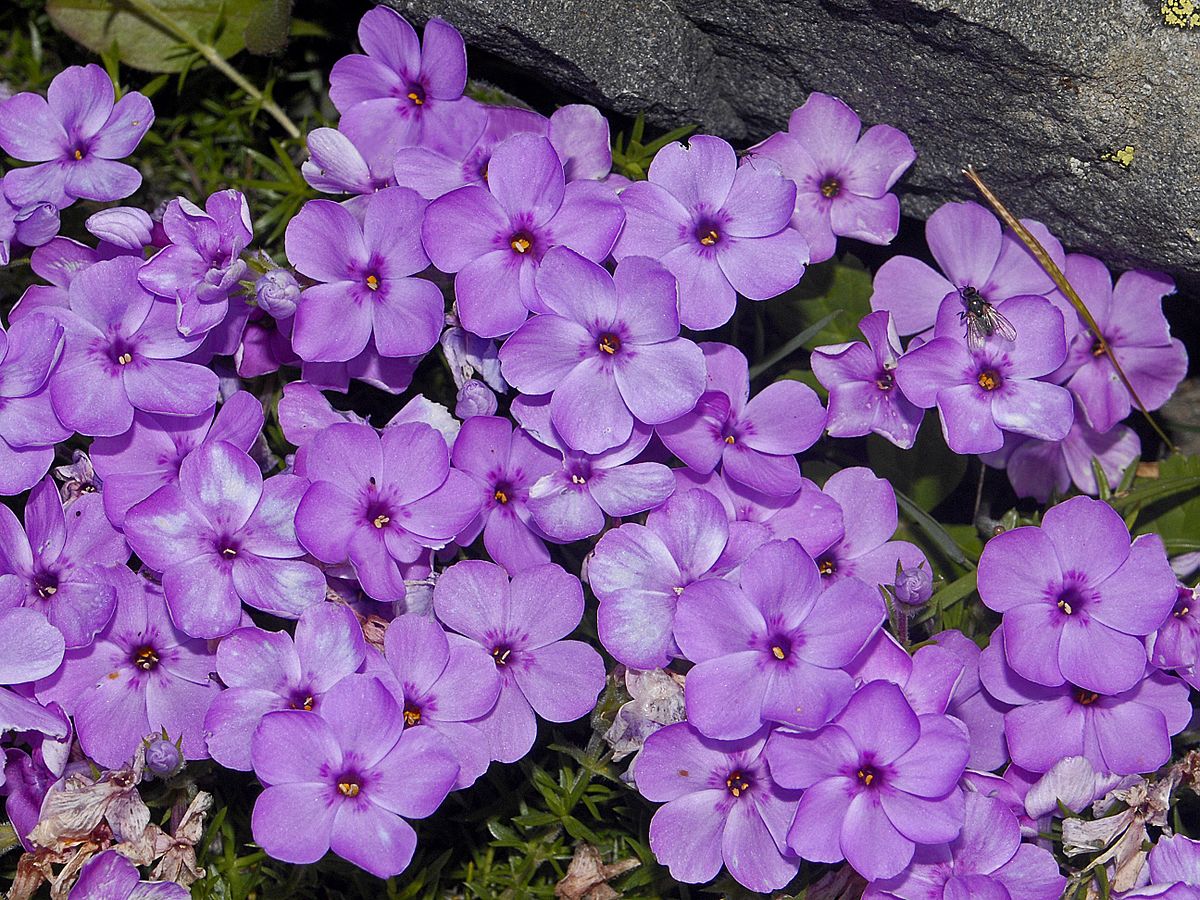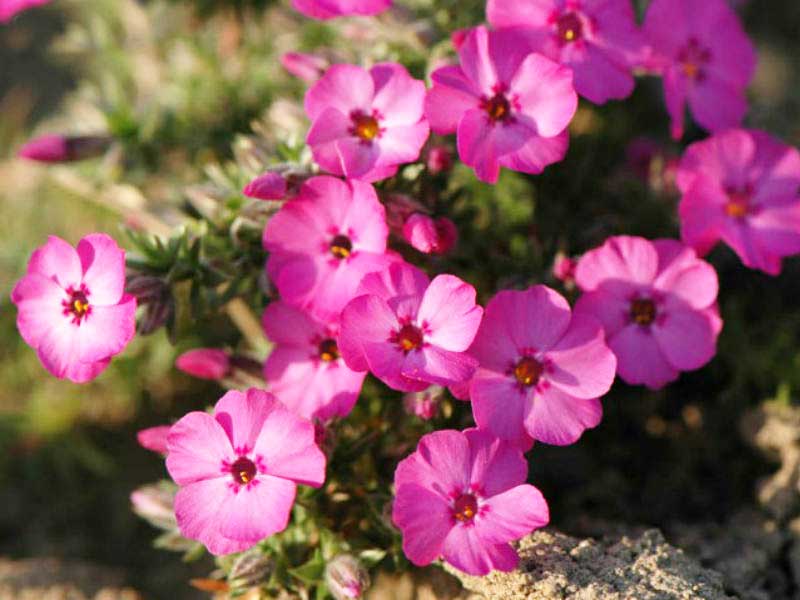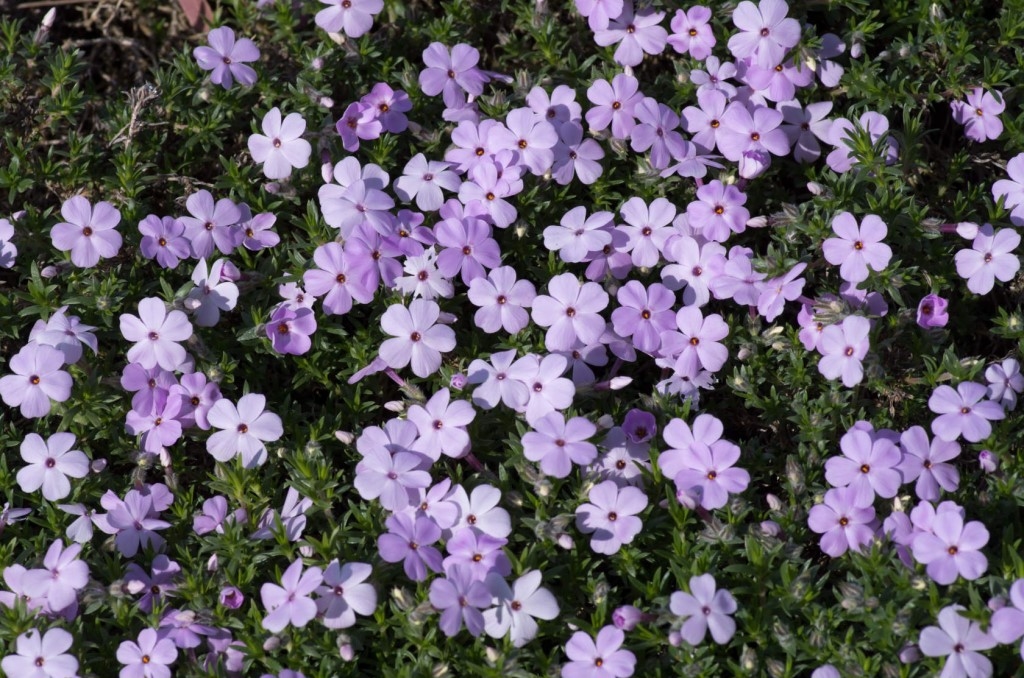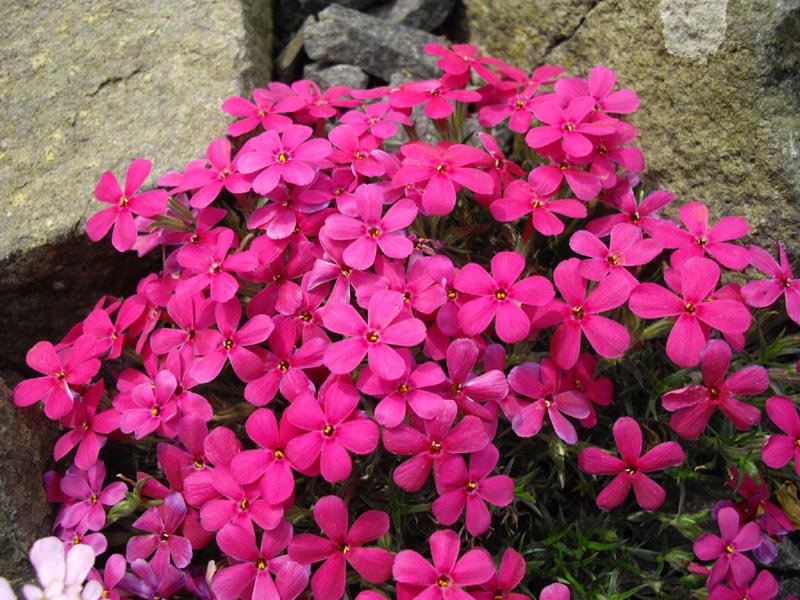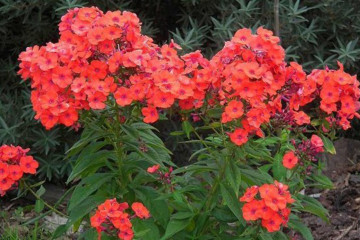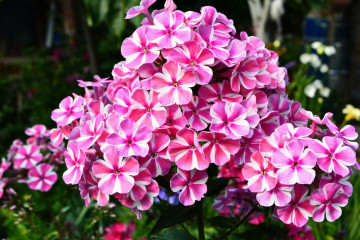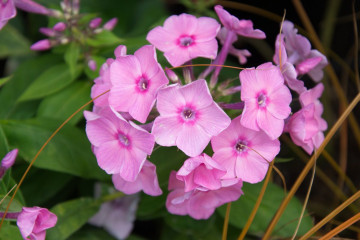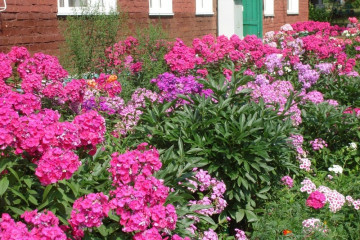Douglas phlox: groundcover
Content:
Ground cover plants are an indispensable part of any garden and flower garden. One of the most attractive examples of this group of perennials is the Douglas phlox. With its help, bright compositions are easily formed, and a rich palette of shades opens up a lot of room for experimentation.
The most common types in gardening
Breeding does not stand still and new varieties of ground cover regularly appear on the market. Among the varieties of Douglas phlox, several especially popular ones can be noted, which are easy to find on sale. Their beauty does not fade even with the most modest care.
Douglas phlox (Phlox douglasii)
The basis for breeding new varieties is a flower, which is native to the mountainous regions of North America. It was discovered in 1927 by David Douglas, who gave the plant its name. Slowly growing clumps of moisture-loving phlox serve as a wonderful decoration for alpine slides and decorative ponds.
Among the distinctive features: the height of the bushes is no more than 8-10 cm, all other types of phlox are significantly higher. Flowers bloom in early June and do not stop blooming until September. The delicate aroma is enhanced in cloudy rainy weather and at night. The evergreen "rug" that wraps around the soil is a bit like moss and is resistant to trampling.
Stems are dense - open. Dark green subulate leaves are 1-1.5 cm long. Flowers are collected in small inflorescences of 1-3 pieces. At the moment, the catalogs mention about 150 varieties, including a new one - Douglas Lachsjuvel phlox, but this number is constantly replenished with new plants with buds of all kinds of shades.
Phlox subulata (Phlox subulata) - Douglas resembles, but has higher bushes - up to 35 cm (shoot length up to 1 m).
White admiral
A distinctive feature of the variety is snow-white flowers. With sufficient bright light, the green cushion of shoots and foliage is literally strewn with buds. Prefers sunny places, but can tolerate light partial shade. The height of the bushes is no more than 10 cm, and the recommended planting density is up to 9-11 plants per 1 m2.
Red admiral
As the name suggests, the flowers of this variety are red with a raspberry tint. The density of bud formation is so high that after their blooming, foliage and shoots are practically invisible. For this, the variety is highly regarded in landscape design.
Lilac cloud
The flower size of this variety is slightly larger than that of others. Petals are shiny pale lilac light shade. As they bloom, the very first corollas brighten, and the fresh ones have a more intense tone. This creates the effect of an iridescent lilac pillow or cloud. Usually blooms in May-June, and then resumes flowering in September.
Crackerjack
The bright crimson star-shaped flower of this Scottish selection has a diameter of 1.5-2 cm. It is characterized by a slightly shifted flowering cycle - May and June. If there is enough nutrition for the plants, then the formation of buds can resume even at the end of July.
Perennial ground cover phlox in garden design
The undemanding plant has a well-deserved success in landscape design.Bushes planted rather tightly very quickly fill the empty space, preventing weeds from growing on it. The bloom is so abundant that no shoots are visible behind it, which in themselves looks good.
It is customary to plant ground cover phlox in front gardens, rock gardens, in various mixborders. They can fill the gaps between the stones of the paths in the garden, plant them on vertical retaining walls, in containers. Surrounded by a green lawn, "spots" of blooming dwarf phlox look amazing.
Reproduction of ground cover phlox
All methods of vegetative propagation are suitable for the resettlement of this perennial: seeds, cuttings, rhizomes. On sale are seedlings in containers that can be planted at any time from May to September. The seeds have a short germination period (1-2 years) and are represented by varieties and hybrids (F1).
Growing phlox from seeds
Seeds are most often sown in open ground in a well-lit place in the second decade of April, when the soil thaws. They emerge very amicably and do not need special care. Seedlings of ground cover phlox are sown only when they are collected later to be planted in containers, rock gardens, flowerpots.
Loose rocky soil is required. Clay, heavy with a lot of humus - not good. It is optimal to dig a planting trench 35 cm deep, filling its bottom with a layer of about 10 cm from a mixture of crushed stone and sand. Next, a mixture of wood ash, fertile soil, sand and crushed stone of the finest fraction is poured into the trench in a ratio of 1: 4: 1: 1.
Sowing is carried out practically without deepening. Experienced gardeners recommend spreading the seeds in the way you want to see phlox bushes in the future, and then sprinkle them on top with a layer of the finest mulch made from sawdust, needles, chopped grass. Strong seedlings will easily overcome this barrier and will not fade if they cannot be watered in time.
Watering is necessary regularly, but stagnation of water should not be allowed. To do this, there must be a lot of loosening components in the soil. The roots of the flower easily rot when waterlogged. A place for planting is always chosen so that in the spring, when the snow melts, puddles do not form on it.
Reproduction of phlox by green cuttings
A twig with several pairs of leaves is an excellent planting material. At almost any time of summer, you can freely cut the cuttings and use them for propagation. In the selected area, they are added dropwise at an angle, and then watered regularly. Rooting usually takes place in 2 weeks.
Cuttings can also be rooted in water. To do this, cut off green twigs and put them in cups, immersing them in water by 2-3 cm. On average, the roots grow in 2-3 weeks, but you need to carefully monitor that the water is renewed in containers every day to clean. Planting can be carried out immediately to a new location.
Phlox care in autumn
Anti-aging pruning is performed in September. Too long shoots, faded buds are removed, and propagation by rhizomes is also carried out. It is enough to dig out pieces of roots and transfer them to a new place so that new phlox bushes will sprout there next spring.
Pest and disease control
Diseases and pests in ground cover phlox are the same as in other varieties:
- Ring spot (Tomatto ringsport virus).It is more noticeable on the wide leaves of tall flowers, and on the small foliage of dwarf flowers it looks like islands of red spots. Nematodes carry the disease, therefore the main control measures are soil cultivation in spring with nematicides (Carbation, Chlorpikrim, Nemagon).
- Rust. It is more susceptible to varieties of burgundy and purple flowers. Appears in the form of red spots on leaves and stems, rapidly growing and leading to the death of plants. The most effective remedy is Bordeaux liquid or 3% ferrous sulfate.
- Powdery mildew. It appears when there is an excess of nitrogen in the soil. This happens when organic matter is introduced. The best preventive measure, adherence to recommendations for the concentration of fertilizing, as well as thinning too dense plantings. Powdery mildew is helped by three times treatment with an interval of 1 week of the entire green mass with a 1% solution of soda ash.
- Slugs. These voracious pests can cause irreparable damage to slow-growing phloxes. To scare away, it is recommended to more often dust the plantings with wood ash, which also serves as an excellent fertilizer.
Undersized pillows shimmering in different colors are an exquisite background for tall flowers, for example, annual phlox, which is used when creating rock gardens, flower beds and flower beds.
